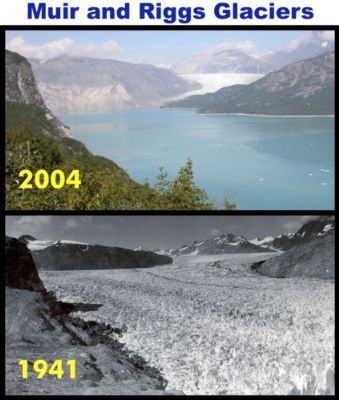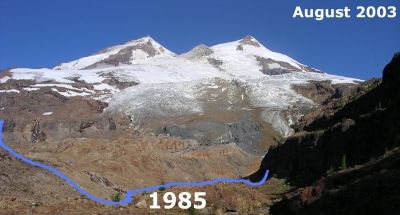by Larry
December, 2008Perhaps Our Last Worst HopeEarlier ("How We Might Cope with Global Warming") I had noted a feasible though expensive option for dealing with the sphere's overheating is to put numerous shades in Earth orbit about a million miles out between us and the sun. Short of using periodic atomic blasts to create "nuclear cooling," this then appeared to me our last best technological remedy, if as a species we are unsuccessful in sufficiently curtailing fossil fuel energy use and the alternative is a runaway "fever" for the planet. Now, however, another serious alternative has been presented, one which I trust will not be used but which has certain appeals that could result in its unilateral application before agreement has been reached on a better and well coordinated approach. The notion is that we might put large amounts of sulfur into the upper atmosphere, replicating in a more regular fashion what volcanoes infrequently do, raising levels of reflective sulfur dioxide in the stratosphere and so reducing the amount of sunlight that reaches land and sea surfaces, thus offsetting trends toward destructive amounts of global heating.
In such a situation, one or more leaders may feel they have to act immediately. The high atmosphere sulfur alternative is one that is both technically and economically practical for a single country to employ as a corrective, hopefully stalling further global warming long enough that near ocean populated areas might be protected or relocated farther inland, while, at the same time, mankind would ideally embark, finally, on a crash program to markedly reduce its greenhouse gas emissions to a level sustainable for the long-term health of ourselves and the rest of the biosphere. This is but one circumstance that might give a president, prime minister, or military leader incentive to exercise the sulfur option. Few scientists now think we are being serious enough about the challenges of the planet's implacable temperature elevations. At some point, one or another global warming related catastrophe will probably present us with such stark choices as whether or not to "go sulfuric," with intimidating drawbacks whichever way that decision proceeds. But a particularly risky thing about the sulfur option is that, regardless of its long-term effects, it might be utilized by a single government, without regard to the fallout for the rest of the global community. The technology is fairly straightforward. Large amounts of sulfur can be added to the stratosphere via high altitude balloons, jets, even missiles. Once aloft, the sulfur combines with oxygen molecules and water vapor to create a cloud of sulfate droplets which deflect or scatter light, and so heat, from the sun. Any major developed nation faced with economic or other degradation as a result of global warming might choose sulfur over a carefully coordinated worldwide plan of action or even simply over conservation efforts. In the U.S. and China, for example, one can hear or read much discussion of how we need not severely cut back on greenhouse gas emissions now because, at the end of the day, there will always be some adequate engineering adjustment that can be made. We seem wedded to notions of our genius as a species always staying a step ahead of the problems we create for ourselves. But that "end of the day" may be coming sooner than people think. Already, climatologists are finding that their estimates of how long before polar ice has melted have been way too optimistic. First forecasts of an opening, free of pack ice, of the long sought Northwest Passage through Canada's northern waters between the Atlantic and Pacific, indicated it was probably 100 years away, despite gradually higher anticipated temperatures in the region. Then, as the actual rate of melting startled scientists making subsequent readings, they suggested it might occur in another 20-30 years. Yet in the summer of 2007, without the usual assistance from powerful icebreakers, the Northwest Passage opened up. Though it closed again, it opened once more just this past summer. For now, this is but a fraction of the polar ice melting expected to occur, but the point is that conditions to the far north are being transformed far more rapidly that earlier assumed. Partially as a result, there are even now disputes occurring between Canada and Russia over rights to potential resources and commercial shipping channels opening in this doubtless lucrative region. If not offset, the end of the polar ice age means much less reflection of sunlight back away from Earth's surface and so a sooner than previously expected acceleration of global warming. Meanwhile, the melting of glaciers and snow cover in mountainous regions worldwide even now threatens to reduce or shut off agricultural and urban water supplies, stable till now for thousands of years. And so it goes. In many directions one can look, the effects of global warming are more rapid and dramatic than was anticipated only a few decades ago. So, if the problem is so great, looming larger all the time, why not use the sulfur remedy? Certainly it is a far better choice than doing nothing.
Despite such downsides, a cynic, observing the last few decades of political and industrial debate about global warming, might wonder if a "quicky" approach might not be what politicians and others prefer to seriously adopting needed transformations in a timely fashion. Many people in the U.S. and around the globe have high hopes for the American President Elect. It is possible that, along with all the other challenges immediately apparent, the new administration will step up to the plate and lead the world in measures dealing with global warming, ones effective before such remedies as the sulfur solution would be employed. Yet, one wonders if the expectations for him are set too high. Even with the best will in the world, Barack Obama's resources and political capital are limited. There are few instances in our species' history of a capacity to both see what is required for the common good and put it into practice in a sustained way. Capitalism, with various reservations and caveats, is arguably an exception to that blanket statement. However, it has so far not been given much chance to really tackle global warming's problems comprehensively or across multiple borders. So the potential it might provide for needed innovations appears likely to offer only incremental benefits in the foreseeable future. Most great modifications by large social systems under stress occur as a result of warfare or painful natural consequences. Ultimately, things may sort themselves out via one or both of these unpleasant routes. What are urgently needed, but may be in short supply, are the kinds of sacrifice, worldwide cooperation, and effective leadership that heretofore only individual nations or groups of temporary allies have managed in times of profound conflict and external threat.
Primary source: A Sunshade for Planet Earth. Robert Kunzig in Scientific American, Vol. 299, No. 5, pages 46-55; November, 2008. |

